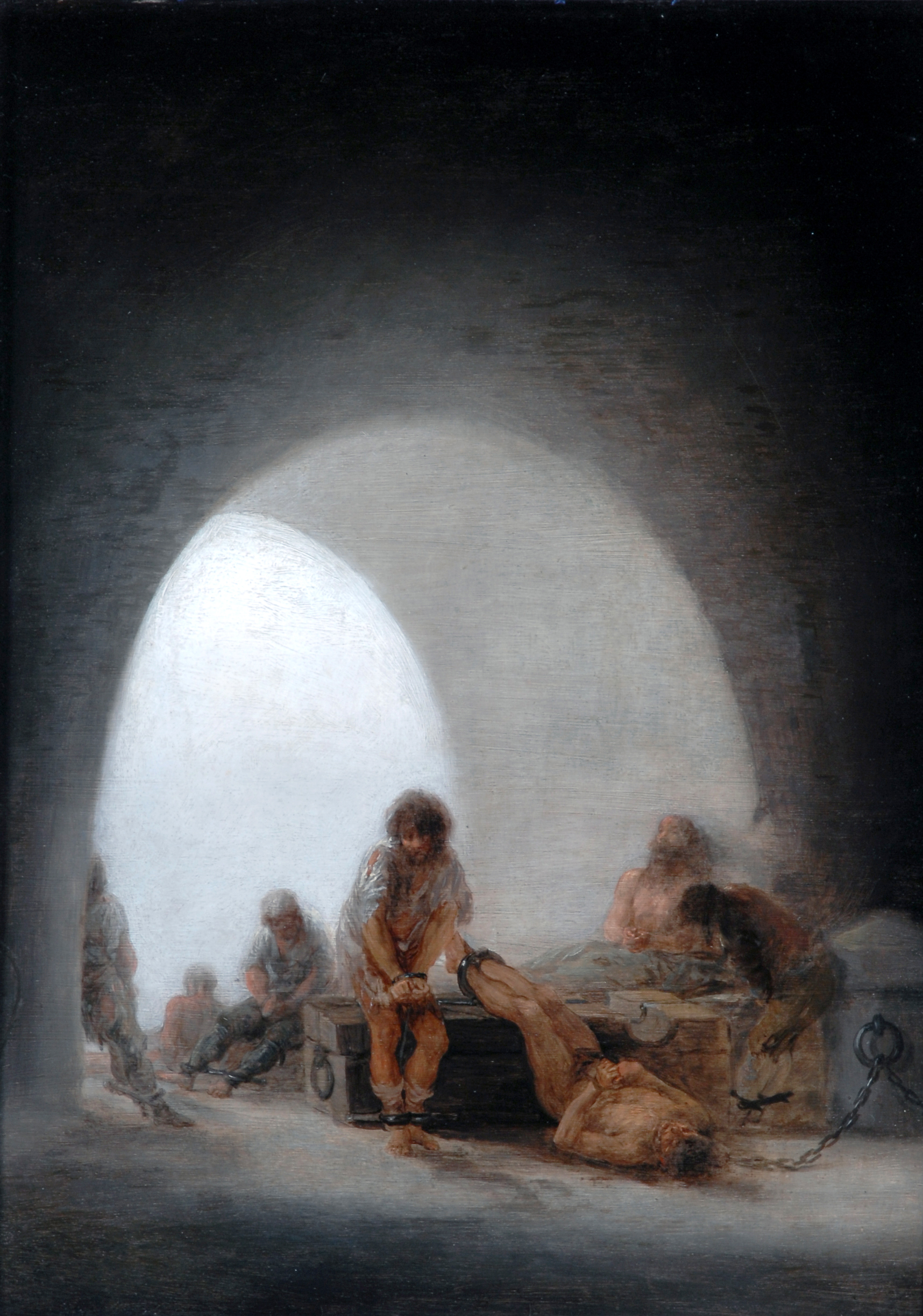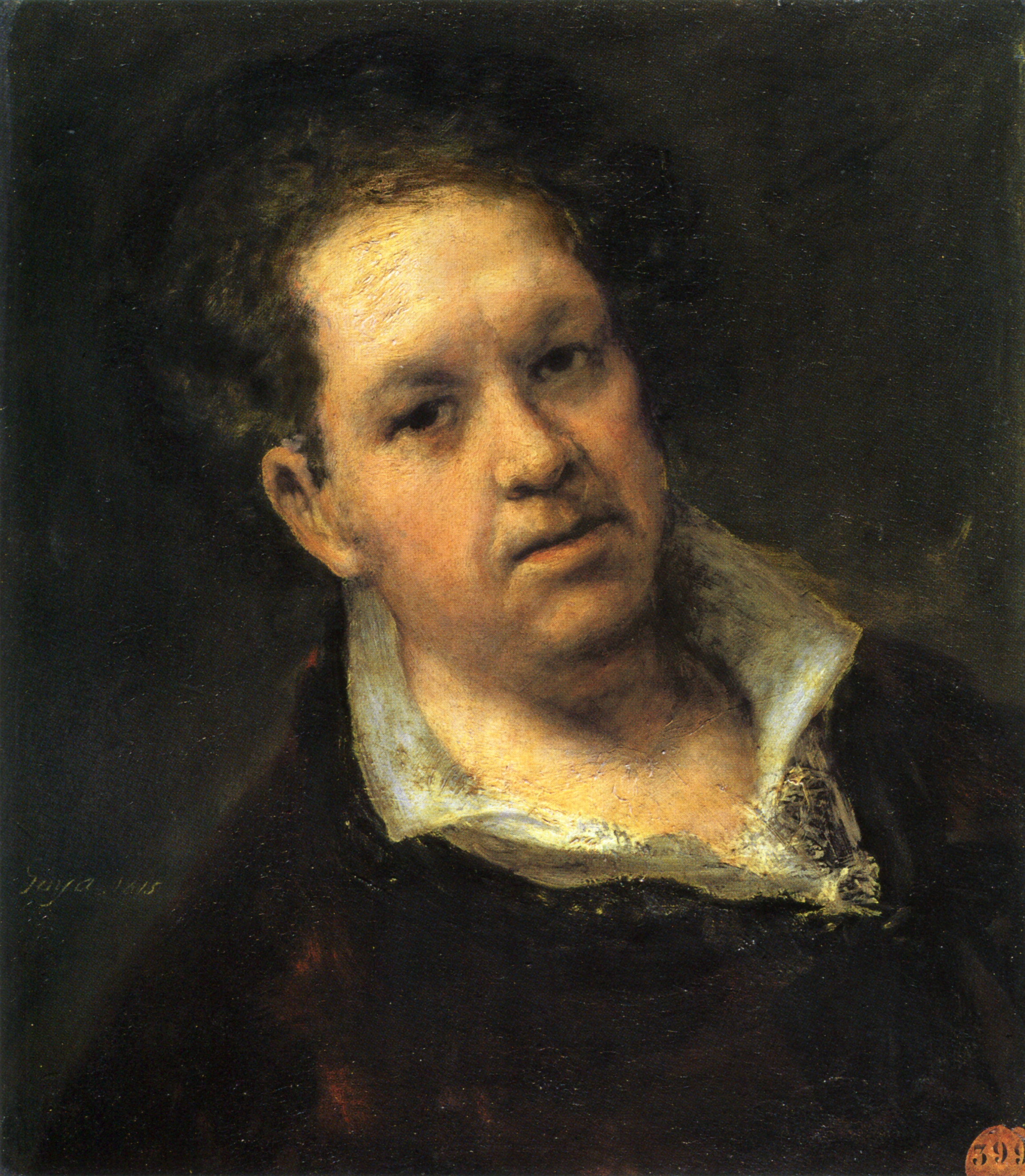Today we present a painting that is on view until January 7th (2018) at The Wallace Collection in the El Greco to Goya – Spanish Masterpieces from The Bowes Museum exhibition. Here you can find more information about this event. Enjoy :)
This picture was bought in 1862 by John and Joséphine Bowes in Paris from the collection of the late Conde de Quinto, through the art dealer Benjamin Gogué.
In a gloomy interior, seven men are represented in different poses and gestures. Their ghostly appearance, the chains that tie their hands and ankles, and the desolate atmosphere, immediately reveal their wretched condition as prisoners. The characters seem almost frozen in their positions underneath a solid archway, which simply adds to the oppressive atmosphere. Furthermore, the diffuse, bright light in the background does not serve to illuminate the scene but rather to accentuate the dark and almost monochromatic setting where the characters are abandoned in despair. Torn rags cover their tormented bodies and one of the prisoners, in particular, is shown naked, lying on the floor with a chain bound around his neck. Not far from him, another prisoner is clumsily standing up and gazes at us with a vacuous expression. These two figures are the most emblematic of the misery that afflicts this group of prisoners and powerfully communicate the artist’s condemnation of the inhumanity of their condition. As an artist, Goya was particularly preoccupied with the representation of human suffering, and depicted the plight of prisoners on numerous occasions. He shared the beliefs of the enlightened thinkers of his day who advocated human rights and sought reform of penal regulations.
This painting was part of a series of twelve small cabinet pictures that Goya produced on tin sheets between 1793 and 1794. The set includes a variety of themes, such as a lunatic asylum, a theatrical scene, and a shipwreck, that he did not normally paint for his patrons. Goya was at the time recovering from a severe illness that forced him into an isolated condition and eventually caused his permanent deafness.


 Francisco Goya
Francisco Goya